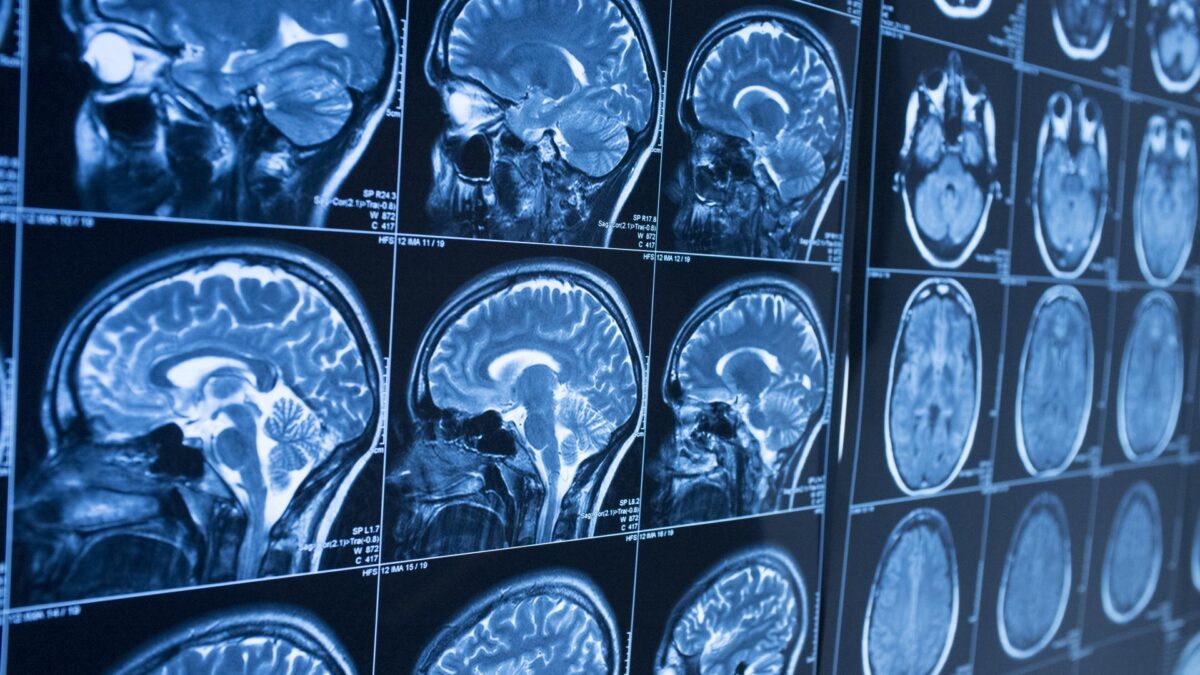Alzheimer’s Disease: Facts & Figures
Every three seconds, someone in the world develops dementia.1 That’s the same amount of time it takes to read this sentence out loud. Get the facts about Alzheimer’s disease—the most common form of dementia.

Alzheimer’s is not a normal part of aging. Alzheimer’s disease is an irreversible degeneration of the brain that causes disruptions in memory, cognition, personality, and other functions that interfere with everyday activities and eventually lead to death from complete brain failure.
Age is the greatest risk factor for Alzheimer’s disease.
- The percentage of people with Alzheimer’s increases with age: 5% of people aged 65 to 74, 13% of people aged 75-84, and 33% of people aged 85 and older have Alzheimer’s dementia.2
- A 2025 study estimates a 42% lifetime risk of dementia after age 55, over double previous risk estimates for this age group.3
Alzheimer's is a growing epidemic.
- More than seven million of all Americans, or an estimated 7.2 million Americans older than 65, have Alzheimer’s disease.
- By 2060, the number of people aged 65 and older with Alzheimer’s and dementia is projected to reach nearly 13.8 million, unless scientists develop new approaches to prevent or cure it.2,4
- Almost 10% of U.S. adults aged 65 and older have dementia, while another 22% have mild cognitive impairment.5
- Roughly 75% of all dementia cases go undiagnosed globally (up to 90% in some low-income countries).6
Each day, thousands of American families are forever changed by this disease.
- It is estimated that over 900,000 people aged 65 or older develop Alzheimer’s each year.7,8
- The number of people living with the disease doubles every five years beyond age 65.9
Alzheimer's is on the rise throughout the world.
Worldwide, at least 55 million people (about twice the population of Texas) are believed to be living with Alzheimer’s disease or other dementias. If breakthroughs are not discovered, rates could exceed 152 million by 2050.10
In the U.S., Black and Hispanic adults are at increased risk for Alzheimer’s than non-Hispanic whites.
- There is a disproportionate burden of dementia and mild cognitive impairment among older Black and Hispanic adults and those with lower levels of education.4
- Nearly 19% of Black and 14% of Hispanic persons aged 65 and older have Alzheimer’s, compared with 10% of older white adults.2
- Despite their higher rates of developing Alzheimer’s, Black and Hispanic adults are less likely than white adults to be diagnosed with the condition.11
Women globally are at a higher risk for developing Alzheimer’s with age than their male counterparts.
- Women are disproportionately affected by Alzheimer’s disease. They comprise approximately two-thirds of all patients and are twice as likely as men to develop Alzheimer’s.12,13
- A combination of biology and environment leads to increased Alzheimer’s risk in women, including genetics, hormones, and gender and life experiences, amongst other possible factors.13
The overall economic impact is staggering.
In 2019, dementia care cost the global economy over $1 trillion (US), roughly half of which is attributed to caregiving by family and friends. According to public financial statements, that is more than the combined profits of the top 10 most profitable American companies in 2022, including Apple, Microsoft, and Amazon.14,15
Alzheimer's is projected to cripple America's healthcare system.
Total payments for health care, long-term care, and hospice for people with Alzheimer’s disease and other dementias are projected to increase from $384 billion in 2025 to just under $1 trillion in 2050 (in 2025 dollars). The average annual per-person cost in 2022 was over $25,000 more for people with dementia than those without dementia.4
People with Alzheimer's disease need support from others, and many of those providing care are not paid for their time and services.
Nearly 12 million Americans, usually family and friends, provide unpaid care for someone with Alzheimer’s disease and related dementias every year. In 2024, these caregivers provided an estimated 19.2 billion hours of unpaid care, a contribution valued at more than $413 billion.4
Unpaid caregivers need help.
Caring for someone with Alzheimer’s or another dementia is often extremely difficult. Many family and other unpaid caregivers experience high levels of emotional stress, depression, and negative impacts on personal health, employment, income, and financial security.16,17
Alzheimer's is the only leading cause of death that is still on the rise.
Due to the COVID pandemic, Alzheimer’s disease dropped from the sixth to seventh-leading cause of death across all ages in the United States. In 2023, Alzheimer’s was the sixth-leading cause of death in the U.S..18,19
In 2020, COVID-19 contributed to a 10.5% increase in Alzheimer’s and dementia deaths. While the COVID inflation in Alzheimer’s disease-related deaths came down in 2021, there were still roughly 20,000 more dementia-related deaths, including Alzheimer’s, than the pre-pandemic average (2014-2019).4,17
Between 2000 and 2019, deaths attributed to Alzheimer’s disease increased 145%, while those attributed to the number one cause of death—heart disease—decreased 7%.20,21 This increase reflects changes in patterns of reporting deaths on death certificates over time as well as an increase in the actual number of deaths attributable to Alzheimer’s.
The prevalence of Alzheimer’s disease is underreported as an underlying cause of death, though projections as to the degree of underreporting vary.22,23
Research Impact
Despite recent increases in funding to Alzheimer’s disease, the U.S. government could spend more to respond to this growing epidemic. For example, the National Institute of Health’s FY24 budget allotted over $2.8 billion more to the National Cancer Institute ($7.2 billion, ~43% to research project grants) compared to the National Aging Institute ($4.4 billion, ~74% to research project grants).24,25
Alzheimer’s Disease Research, a BrightFocus Foundation program, is a leading funder of research worldwide to better detect, prevent, and cure Alzheimer’s and provides expert information on this devastating disease.
Related Resources
Related Resources & Information

Zoom In on Dementia & Alzheimer's
The Next Generation of Alzheimer’s Treatments
Join behavioral neurologist Dr. Marwan Sabbagh for an in-depth discussion about emerging Alzheimer’s therapeutics now in late-stage clinical development.

Expert Information
Why Some Brains Stay Sharp With Age
Learn how cognitive reserve can make some people more resistant to memory decline.

Downloadable Resource
Understanding Alzheimer’s Disease
Alzheimer’s disease affects people’s memories, but it involves far more than simple forgetfulness. Learn more about this devastating disease.

Downloadable Resource
FDA-Approved Alzheimer’s Therapies Infographic
Although there is no cure for Alzheimer’s disease, certain treatments can help control or delay its symptoms, particularly in the early stages of the disease. Talk to your physician to see if these medications are right for you.

Zoom In on Dementia & Alzheimer's
The Gut Microbiome and Alzheimer’s Disease: Understanding the Connection
Join Dr. Beau Ances of Washington University in St. Louis to learn about the emerging science linking gut health and brain health.

Story
“Help the One You Can”
Meet Mel and Irene Sahyun, donors to BrightFocus' Alzheimer's Disease Research program.


